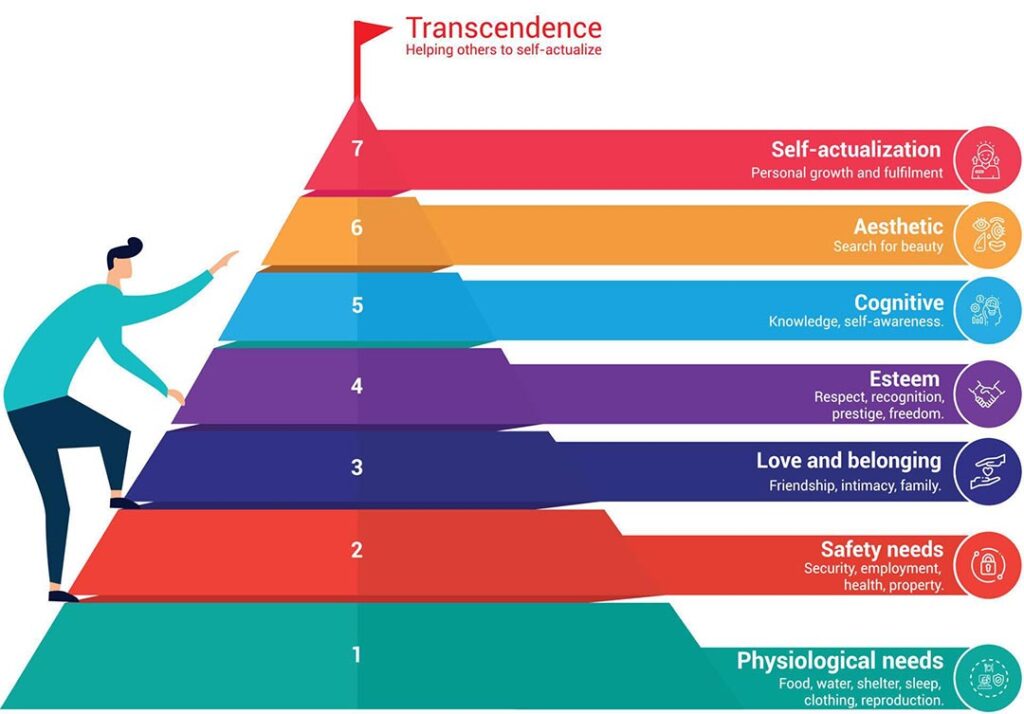Strategic communication plays a critical role in the success of an organization. A good strategic communication plan can help the organization achieve its goals, create a positive image for its employees, customers and society, and support the organization's marketing, sales and brand management activities. Strategic communication is also extremely important in crisis situations. Organizations can maintain or regain their reputation by communicating quickly and effectively in crisis situations.
Strategic communication planning begins with a well-designed strategic communication plan and an appropriate messaging strategy. A good strategic communication plan should include measurable goals and objectives set in line with the organization's goals. The plan should identify the channels, target audience, messages and content that the organization will use to achieve its goals.
A good strategic communication message should be conveyed to the right audience, in the right channel, at the right time and in the right way. Messages should be designed to engage, mobilize, inform or educate target audiences. Messages should also be in line with the goals, values and vision of the organization.
Strategic communication planning is designed to achieve the goals of the organization. The plan should be designed in accordance with the goals, objectives and values of the organization. A good plan should identify the resources needed for the organization to achieve its goals, budget, staff, time etc. issues should be addressed. Also, the plan should identify performance measures that will help the organization's activities achieve measurable results.
After the strategic communication planning and messaging strategy is prepared, the organization needs to implement the strategic communication plan. Strategic communication practices are communication tools through which the organization conveys its messages to its target audience. These tools can be used for press releases, websites, social media, advertising campaigns, events, meetings, seminars, etc.
The success of the strategic communication plan is judged by the measurable results of the organization's performance. Performance measures are determined in accordance with the objectives of the organization. For example, if an organization aims to increase its sales through an advertising campaign, the increase in sales can be used as a performance measure.
Successful examples:
» Nike: Nike uses strategic communication strategies to properly market its brand. Especially in recent years, it has succeeded in reaching large audiences with its campaigns on social media platforms.
» Coca-Cola: Coca-Cola is a globally recognized brand and it achieves this success with the right strategic communication plan. Coca-Cola takes customer feedback into account to protect its brand image.
» Apple: Apple has become a globally recognized brand thanks to its innovative technology products and effective marketing strategies. Apple uses creative strategies for product launches and advertisements.
Failed examples:
» United Airlines: United Airlines came to the fore in 2017 with news that it mistreated passengers. After this incident, it was discussed that United Airlines' strategic communication strategies were insufficient.
» BP: BP went through a difficult period due to the oil spill scandal in the Gulf of Mexico in 2010. BP's crisis management and communication strategies were criticized and the organization's reputation was severely damaged.
» Volkswagen: Volkswagen was accused of cheating on emissions tests, and customer trust and brand image were severely damaged in the aftermath. Volkswagen's strategic communication strategies were insufficient to gain customer trust and protect its brand image.
These examples show how important strategic communication strategies are to the success of organizations. Creating a successful strategic communication plan can help organizations protect their reputation by communicating the right messages to their target audiences.
Organizations should communicate their messages to their target audience using strategic communication tools. When choosing strategic communication tools, factors such as demographic characteristics, interests and behaviors of the target audience should be taken into account. For example, an organization that wants to reach a young audience can use social media, while an organization that wants to reach an older audience can use traditional media. The lack of strategic communication can make it difficult or completely prevent an organization from achieving its goals. Some situations that may arise as a result of a lack of strategic
communication:
Misunderstanding of target audiences: Lack of strategic communication can lead to insufficient knowledge of target audiences' needs and expectations. This can lead to misunderstanding or misplaced messages, which can reduce audiences' trust in the organization.
Communication confusion: The lack of strategic communication can cause conflicting messages to be sent between different departments or individuals. This may result in the organization not being able to draw a consistent image to the outside.
Loss of competitive advantage: The lack of strategic communication can prevent the organization from communicating messages that will provide a competitive advantage over its competitors. This may cause the organization to lose market share.
Failure in crisis management: Lack of strategic communication can result in the inability to prepare the right messages to respond in crisis situations. This may result in the organization's failure in crisis management and loss of reputation.
Lack of performance: A lack of strategic communication can prevent the organization from communicating the right messages to its employees. This can affect the performance of employees, making it difficult for the organization to achieve its goals. Loss of reputation: Lack of strategic communication can damage the reputation of the organization. Misinformation or incomplete knowledge of the target audiences about the organization can negatively affect the reputation of the organization.
For these reasons, it is important for organizations to properly understand their target audiences and communicate effectively with them by creating strategic communication strategies.
As a result, strategic communication plays a critical role in the success of organizations. A good strategic communication plan should be designed and implemented in accordance with the objectives of the organization. Organizations should consider the characteristics of the target audience when choosing strategic communication tools. The success of the strategic communication plan can be measured by performance metrics and used to evaluate the organization's strategic communication plan.
Share:
Related Articles

Understood Employees Contribute and ...
In the corporate world, we often hear statements like: “They’re talented, b ...

The Silent Power of Corporate Succes ...
In today's business world, organizations operate in an environment shaped b ...

Customer Relations and Training in B ...
Bancassurance, a business model in which banks market insurance products to ...

What Awaits the Business World? A St ...
Digitalization is no longer just a technological trend but a necessity for ...

Digital Transformation in Conflict M ...
Conflict is a reality we encounter in all aspects of life. Whether at home, ...

The Road to Success: Market Dynamics ...
In today’s rapidly changing market conditions, the importance of management ...

Leadership in the Digital Age: A New ...
Leadership in the digital age requires embracing continuous learning, innov ...

Mastering Risk Management
Mastering risk management is not merely an option for businesses but a nece ...

International Banking in Germany: A ...
Germany, with its strong industrial structure, high-technology products, an ...

Leadership and Maslow's Hierarchy of ...
Abraham Maslow's hierarchy of needs is a fundamental psychological theory u ...

Leadership and Sustainability of Org ...
Today's business world is characterized by continuous change, technological ...

The Importance of Coaching Skills f ...
The Importance of Coaching Skills for LeadersCoaching skills are essenti ...

Fintech in Turkey: The Rise of Finan ...
Fintech in Turkey: The Rise of Financial Technology

Bancassurance
Bancassurance is a business model that is among the financial services offe ...

Banking and Frankfurt
When the banking and finance sector in Europe is analyzed, it is seen that ...

Digital Banking and Germany
Digital banking is a banking service where customers can do their banking o ...

Banking in Germany
Euro used since 2002 in The Eurozone, the currency of 19 EU members. There ...

Strategic Communication
Strategic communication plays a critical role in the success of an organiza ...

Importance of Supply Chain
The supply chain is a critical factor in which a company manages the flow o ...

Key to Success: Going Digital
Digital transformation is a transformation process that aims to increase th ...

Welfare
Poverty and inequality are one of the biggest challenges the current societ ...

ChatGPT
ChatGPT, developed by the OpenAI company known for its work and research in ...

What is Emotional Intelligence and w ...
Emotional intelligence (also known as emotional quotient or EQ) is the abil ...

The Importance of Women's Employment ...
Women's participation in the workforce is closely related to the level of d ...

Digital Banking II – Digital Banking ...
A serious step taken for the spread of “digital banking” in Turkey, providi ...

The Perception of Morality within Ma ...
If everybody in the world jumped out of a window, would you? This question ...

Digital Banking
Digital banking is a banking technology that offers customers the opportuni ...

Banking, Artificial Intelligence and ...
We have heard the concepts of metaverse, artificial intelligence and machin ...

Green Asset Ratio
Sustainable finance has an important place among the investments made for t ...

Servant Leadership
There is an effective form of management that we often hear about today: se ...

Sustainability In The Global Banking ...
Before Covid-19 wreaked havoc on the world’s economies, the global banking ...

Revolution of Digital Banking
With the European Central Bank considering to investigate for a digital cur ...

Taking Action and Making Decisions i ...
Uncertainty is the fact that an event is not within the framework of certai ...

Wind of Change
Change is an important concept that must be managed for employees at all le ...

Organizational Justice
“What is justice? Giving water to trees. What is injustice? To give water t ...

Open Banking
Digital transformation has started to show its effects in every aspect of o ...

Digital Literacy And Corporate Life
There are many innovations that managers and employees need to follow in or ...

Financial Literacy
The words money and economy are two important concepts that have a great pl ...

Sustainability and Bank
The solutions we have found to our various needs throughout history and ada ...

Adaptability, Flexibility and Leader ...
Being able to adapt to changing conditions is very, very important not only ...

Creativity and Leadership Relationsh ...
The world is getting more competitive every day. For this reason, the servi ...

Competitive Analysis and Banking Sec ...
Competition analysis requires you to examine your direct and indirect compe ...

Delegation in Management
The statements "two heads are better than one" or "teamwork makes the dream ...

Climate Change
All creatures evolve to best adapt to environmental impacts. Those who are ...

Change of Banking Service Channels i ...
Global crises such as the pandemic, force the existing structures to change ...

Innovation
It is undeniable that innovation has a very important place in today's worl ...

Artificial Intelligence
Artificial intelligence is no longer just something specific to science fic ...

Entrepreneurship
Entrepreneurship is the process of starting a new business that incorporate ...

Global Leadership
The world is changing day by day and the information we have today is out o ...

Resilience and Leadership
We encounter many events in life that cause us difficulties and stress. How ...

Entrepreneurial Spirit for Leaders
Why is important for success? The conventional perception of entrepreneursh ...

Finance Leadership in a Pandemic
Crises bring along a period in which institutions need to review their fina ...

Crisis Management
Crisis is a state of tension that puts the existence and goals of an organi ...

Strategic Leadership and Pandemic
Strategic Leader is the person who sets the roadmap to achieve the ultimate ...

Awareness, Appreciation, Success
It is very important for a person to recognize himself, discover his power ...

Woman and Career
People who are raised by unemployed mothers have a mother model in their mi ...

Conflict Management
In the broadest sense, conflict is disagreement between two or more people ...

Leading with Kindness
Kindness is an important virtue. Kindness in all areas of life makes relati ...

Smart Meetings
Meeting management is the process of managing all stages and components of ...

Negotiation Management
Negotiation is defined as a dialogue aimed at reaching a common and benefic ...

Virtual Leadership
The repercussions of the digitalization process in business life were sprea ...

Manager and Patience
Patience is an important concept in management. Patience is active, not pas ...

Being All Ears
Human beings differ from other creatures in their way of communicating. Com ...

Networking
The fact that managers in the corporate world act with awareness of network ...

Asking Strong Questions
For managers, asking a strong question is an important skill. Managers, who ...

Managing Yourself
The manager at work is in communication with the other parts of the busines ...

Mental Immunity
In the fight against Coronavirus (Covid-19) pandemic, knowledge and awarene ...

